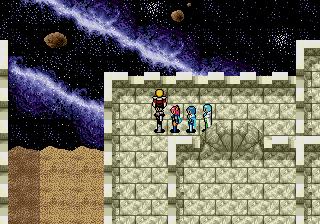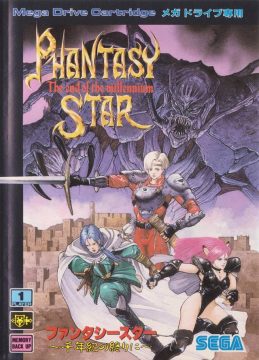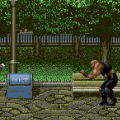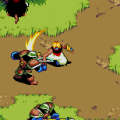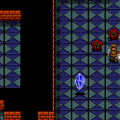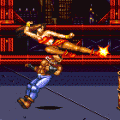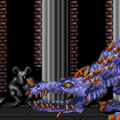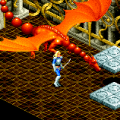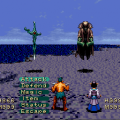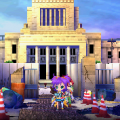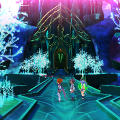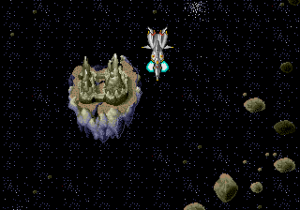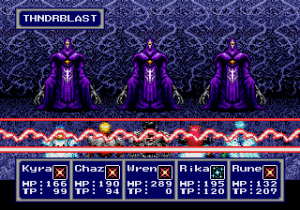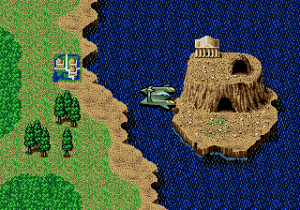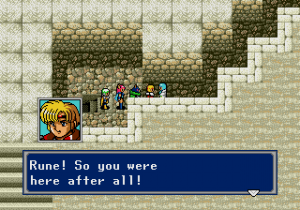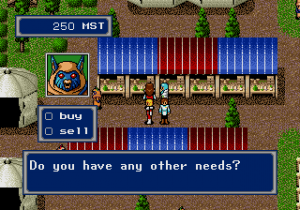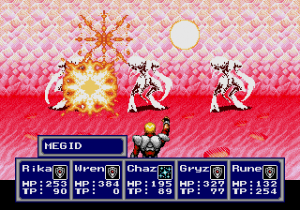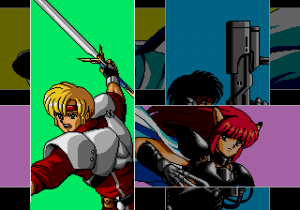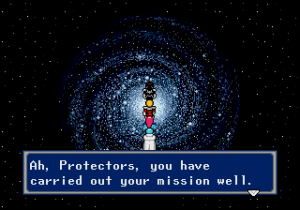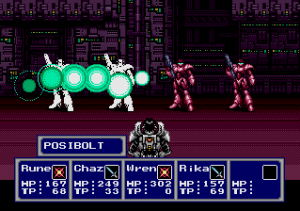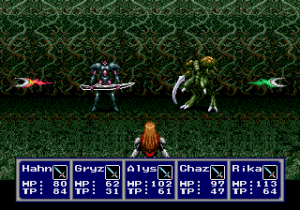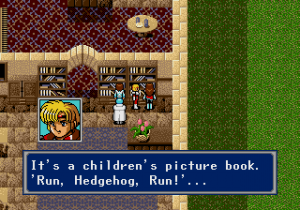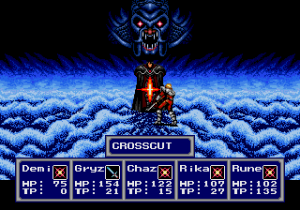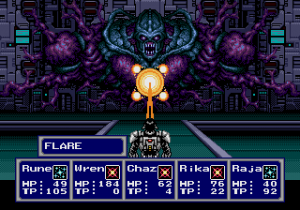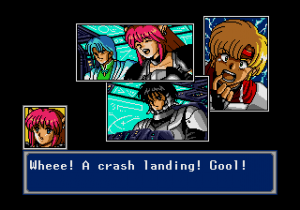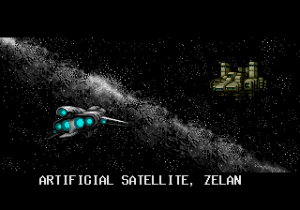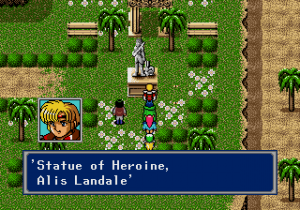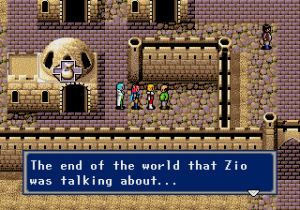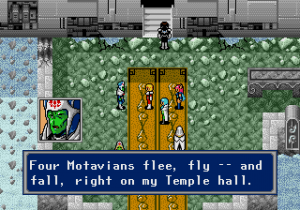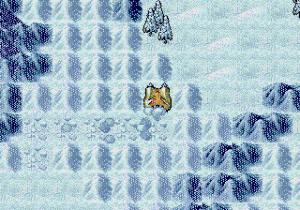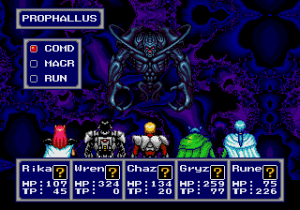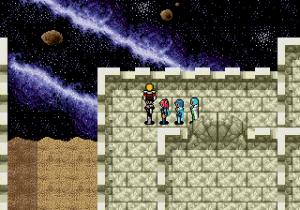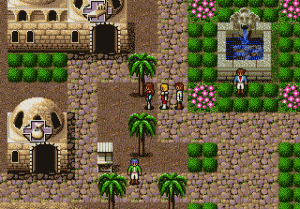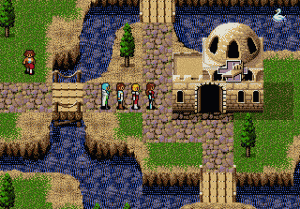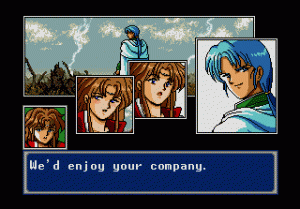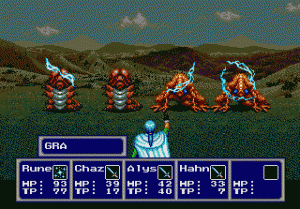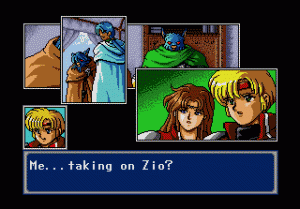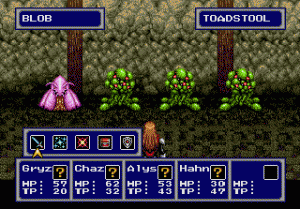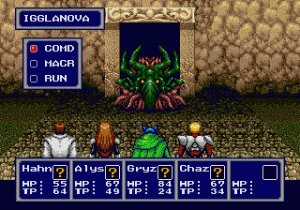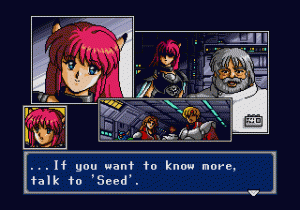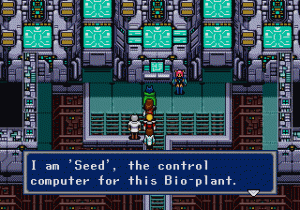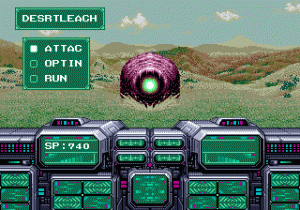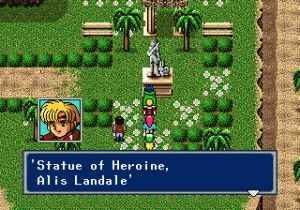While the first three Phantasy Star games came out within about a year of each other, it would be over three years before another mainline series entry. This time around, rather than hand out development to unproven new team as they had done the last time, Sega decided to reunite the remnants of the original development team. Chieko Aoki had left Sega, Kotaro Hayashida wasn’t directly involved in game development anymore, and Yuji Naka’s time was now fully dedicated to Sonic, so artist Rieko Kodama was put in charge. Toru Yoshida, the character designer for Phantasy Star II, provided an outline for the story and acted as co-director, while the actual script was written by series newcomer Akinori Nishiyama, who’d mostly worked as a graphic artist up to that point. There were ideas they hadn’t been able to realize during the first two games’ development, and mistakes they wished to rectify; there was also the matter of Phantasy Star III, which had left Algo and the spirit of its prequels behind to considerable backlash. With these things in mind, they strove to create the definitive Phantasy Star experience, bringing together the best of all three games in a grand finale.
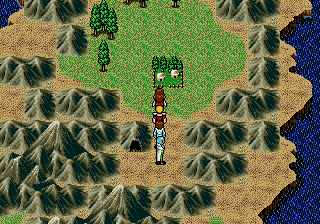
The outskirts of Tonoe village, on Motavia.
It begins on the planet Motavia, roughly a thousand years after the events of PSII. After Parma, the largest planet in the Algo Solar System, exploded, large chunks of it hit Motavia, killing most of its inhabitants as well. Without Mother Brain to care for them, the survivors, estimated at less than 10% of the previous population, had to learn to fend for themselves again. With time, things stabilized, and civilization began to get back on its feet, slowly rediscovering the advanced technology their ancestors once enjoyed. At the Motavia Academy in Piata, scholars built a telescope through which they could observe Dezolis, the cold planet their ancestors once traveled to in ships that sailed the stars. But just as they had a millennium before, and another one before that, things have begun to go bad.
The soil has been drying up, making cultivation difficult. Quicksand is spreading and taking over the land in some parts, isolating communities into virtual islands. And once again, a new, tougher breed of monsters has appeared, and the hunters, the warriors-for-hire who fight them for a living, can barely keep up.
One of the few hunters who isn’t struggling is Alys Brangwin, toughest and most famous of her lot. Along with her new assistant and former trainee, a teenager named Chaz Ashley, she leaves for a job in faraway Piata, the Town of Learning, where monsters have been spotted in the Academy’s basement. Alys is immediately suspicious; monsters don’t usually wander into towns. After finding monster-breeding capsules there, she confronts the Principal; as it turns out, a professor found them in a cave while investigating the cause of the recent outbreak, and had them brought back. He then left for a second expedition from which he didn’t return. For a fee, Alys agrees to accompany his assistant, Hahn, to go search for him. Before long, they learn that some of the computer systems that were once part of Mother Brain’s network have remained active under the supervision of more benevolent AI, maintaining a climate favorable to Algo’s inhabitants, and that somebody, or something, has been causing them to go haywire. Meanwhile, Zio, a self-professed magician and doomsday cult leader, has raised a small army, and is leaving a trail of death and destruction everywhere he appears in the name of some dark god. But as one would expect after playing the previous games, he is not the true antagonist. By the end of their journey, having traveled to Dezolis and beyond, the heroes will learn of the true nature of Dark Force, the mostly silent, unexplained antagonist of the three previous games, and of Algo itself, while Chaz will have taken on the role of leader.
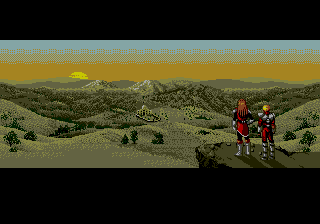
Alys and Chaz, on a cliff overlooking Piata.
But what’s impressive about the story isn’t so much its outlines as how well it is told. Phantasy Star II‘s six megs cartridge might have been a big deal in 1988, but by 1993, games had become much larger, and PS4’s cartridge held four times the data. With that much space, it was finally possible to properly develop the story, and the team came up with a unique method; rather than portraying key moments through in-game conversations, like most RPGs did at the time, they develop in series of illustrated panels that gradually fill up the screen to portray events and character reactions as they take place, manga-style. It’s essentially a less memory-intensive counterpart to the anime cutscenes of CD-based RPGs like Lunar, with the advantage that they were drawn by the same people as the rest of the game (mostly Yoshida and Kodama), so there’s a greater visual continuity. These scenes work beautifully, strengthening the narrative by adding dynamism to tense parts and emotion to the more dramatic moments. Indeed, the game was originally planned as a CD game, but the failure of the Sega CD meant that the game had be completely reworked as a cartridge game.

An excerpt from an early cutscene…
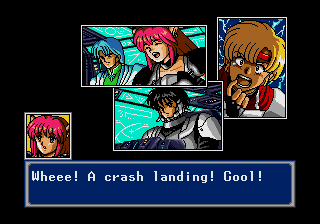
…and from a more light-hearted one midway through the game.
The characters, too, get much more development, not just through those scenes, but also through frequent interactions and conversations with NPCs, which sometimes prompt them to comment. Should you forget where you are in the story, a Chat command even brings up a brief discussion of the current state of things, a novel feature at the time. Scriptwriter Nishiyama was not a fan of the silent protagonists found in most Japanese RPGs, so he opted to have Chaz comment on everything you examine; cabinets, bookshelves, kitchen stoves, flowers pots. He also refuses to steal from people’s houses like some common RPG hero, which eventually ties into his past. His mentor Alys (no relation to PS1‘s Alis) has a tough approach to business, and doesn’t take nonsense from anyone, but she’s also caring and concerned about the state of the world. In battle, she fights with slashers, hitting all enemies in battle for substantial damage, and starts at a higher level, facilitating the early game quite a bit.
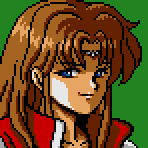
Alys
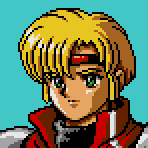
Chaz
There are three more key characters that will be with you for a large part of the game. Rika is a Numan, the first representative of a new, genetically-engineered species born of a thousand years’ worth of refinements on a prototype known as Nei. She is energetic and innocent, but has a wealth of theoretical knowledge taught to her by the AI who created her, Seed. She has cat ears and fights with claws, and is quite versatile, a decent fighter and healer who can also cast some very useful buff spells. She also has high speed, and often acts first in battle. Rune Walsh is an arrogant wizard, and the last person on Motavia capable of true magic. He mocks and belittles Chaz constantly at first, but mellows out as the story advances. As he quite fragile, it’s better to equip him with two shields and let him use his abundant attack spells. Finally, there is the Android, Wren, who lives on the artificial satellite Zelan, built long ago to take over some of Mother Brain’s former responsibilities. He is not PSIII‘s Wren, but a similar model, though physically larger. He is calm, resourceful and knowledgeable, with naturally high defense and tons of HP. He cannot be healed by regular spells, and must use his own powers or items known as Repair Kits instead. He also revives automatically with 1 HP if he dies in battle. His guns either hit one enemy for lots of damages, or all enemies for a smaller (but still substantial) amount.
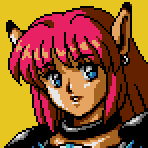
Rika
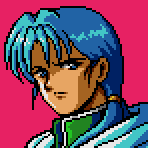
Rune
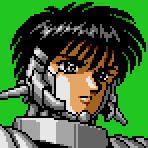
Wren
Finally, there is another set of characters who join you for a stretch, then depart to be replaced by the next character, though any one of them can be chosen for the final battle. They are:
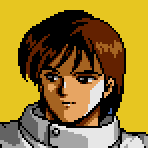
Hahn
Hahn Mahlay, a scholar at Motavia Academy, involved in the events that open up the game. He fights with knives, and is generally pretty weak in battle due to his very low defense, but he’s your first healer.
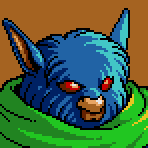
Gryz
Finally, a Motavian actually gets to be a playable character. Gryz is an axe-wielding warrior, dead set on taking revenge on Zio. He’s generally quiet and keeps to himself. He has high attack, defense, and HP, making him a natural fighter, but very few techniques or special skills.
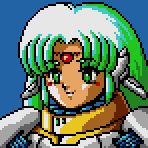
Demi
Demi is an android serving under Wren, though you actually meet her first. She’s perky, pleasant, and eager to help. She has similar abilities and uses similar equipment, though she is a bit weaker in battle in exchange for some healing capabilities.
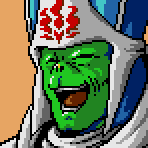
Raja
PSIV is the game where the other two peoples of Algo finally get to shine, so it’s only natural that a Dezolian also joins you party. Raja is an easy-going elderly monk at a remote temple who loves to tell corny jokes. Like Rune, he’s no fighter, and his staves are easily replaced by dual shields, but he’s an insanely powerful healer. He even has a skill that lets him restore other characters’ MP, something no other character or consumable item in the game can accomplish.
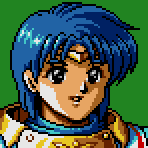
Kyra
Kyra Tierney is a headstrong young Esper who rushes to battle without any thoughts to her safety. She is admired by her fellows at the Esper Mansion, but also causes them much worry. She has complete faith in Lutz, the mysterious leader of her group, who only appears during important ceremonies. She fights with slashers, like Alys, and also wields both healing and attack techniques. She has high intelligence, meaning her spells are quite powerful, but she tends to be stuck with lower-level techniques.
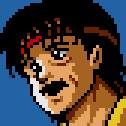
Seth
Seth is a middle-aged archaeologist you meet on Soldier’s Island, where the ruins of a legendary temple are located. He seems quite affable, complimenting the party on their battle prowess at every turn, but wields a variety of Darkness-based skills usually reserved for monsters.
In addition to techniques (Phantasy Star‘s version of magic), each character also has its own unique skills, which can be used a set number of times (dependent on the character’s current level) in between rests at the inn. While those serve similar functions, the fact that they do not draw from your TP means you’re free to put some of them to use in regular battles without having to worry about saving them for boss fights. For example, if you run into a particularly tough group of enemies, rather than just attack them over and over, you can use Chaz’s Airslash and Rika’s Disrupt, which attack all enemies for regular damage (thus making it useful against groups, but not against most bosses), or you can use an instant death skill like Gryz’ Crash, which tend to have a decent success rate in this game. Other skills make characters essential to your party, like Wren’s Barrier, which boosts the entire party’s defense against attack magic.
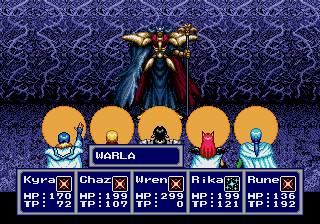
It’s essential to raise your party’s stats during major boss battles, such as this one.
Both skills and techniques play into the game’s other novelty, combinations. Using certain moves on the same turn in the right order will cause characters to combine them into a new, more powerful move, a concept Chrono Trigger would popularize two years later. The order in which characters act depends on their speed, but there’s also an element of chance, so to ensure combination spells come off properly, you can program your characters’ actions for a turn into a Macro, which you can then select during battle. The Macro system also serves as a more versatile alternative to the usual Auto Battles. Like in PSIII, up to five characters can fight at once, though the number of monsters per battle is a lot more reasonable – usually just three or four.
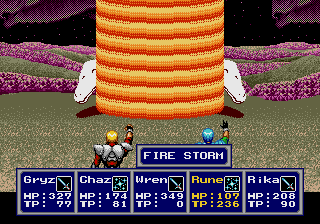
Visually, the game is closest to Phantasy Star II, with a similar art style to the sprites and environments. The behind-the-characters battle view returns, as do the elaborate animations on both sides, however they move faster by default and their speed can be increased even further, leading to a nice, snappy combat pace. The walking speed, too, has greatly increased, so much so that you almost seem to glide on the ground, making this one of the very few turn-based RPGs that can be described as speedy.
If PSIII had little grinding, PSIV has none. Everything has been calculated so that your party is always just strong enough to handle everything that comes your way and wealthy enough to afford the latest equipment, as long as you don’t skip the major side-quests. Enemies hit hard, so they remain a legitimate threat, and the bosses, which are more much frequent than before, usually require a bit of strategy and some buffs to make it through. The dungeons are shorter and more straightforward than before, and the encounter rate is lower. Where treasure chests in the previous games rarely held very useful items, PSIV‘s often contain unique equipment, including all of androids Wren and Demi’s, which isn’t sold in shops. They’re also where you find most of their battle skills, which are technically hardware components. In general, the game balances story and dungeons so that it rarely gets too wordy or too battle-heavy and maintains a steady momentum.
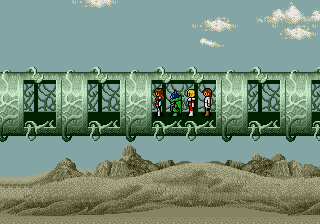
The dungeons range from ominous magical castles…
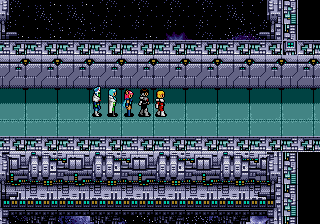
…to high-tech facilities like this one.
The world feels larger and livelier than ever before, in part due to its numerous towns. NPCs tell you about their surroundings and their lives, which often tie up into the lives of other NPCs in town or elsewhere; there’s a lot of little connections to be picked up on if you’re paying attention. Their lines change following major events, and the more interesting NCPs end up feeling like actual characters with their own little stories.
Some of those stories tie into the game’s eight main sidequests, accessed through the Hunter’s Guild in the bustling city of Aiedo, where you can take on jobs in exchange for experience and money. Some involve boss battles, some mini-dungeons, while others are all talking and warping around, but they all have their own little arc, and are generally much more interesting than the MMO-inspired, go-kill-10-slimes-so-I-can-make-a-potion sidequests commonly found in RPGs today.
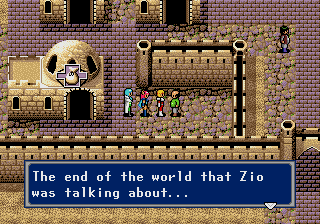
“…maybe he meant the end of his world?”
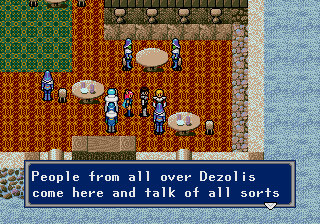
A tavern in Dezoris.
To travel this world, all three vehicle from the original make a comeback. The Land Rover is now used to get past quicksands, the Ice Digger still digs through ice, and the Hydrofoil still hovers over land and water. All three move extremely fast, but that’s not all; the vehicle themselves can now engage enemies in battle. Battles triggered while traveling aboard a vehicle are fought using the machines’ own cannons and special weapons, and their HP is automatically restored after each fight. It doesn’t serve much of a purpose beyond looking cool, but it’s nice change of pace the first few times.
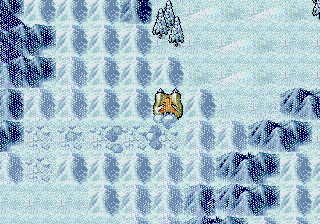
The Ice Digger at work…
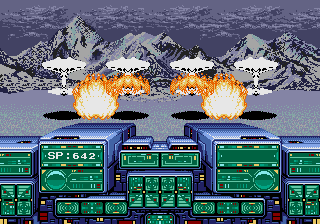
…and in battle.
Probably the only member of Phantasy Star III‘s team to return is composer Izuho “Ippo” Takeuchi. Her melodies are as evocative as before, but there is much more rhythm, with heavy drums and bass lending her soundtrack more dynamism. In futuristic areas, techno and other forms of electronic music take over to reflect the environments, while one memorable scene is only accompanied by a sorrowful acoustic guitar. As the game features many more tracks than its prequels, a lesser-known composer named Masaki Nakagaki also supplies about a third of the music, along with the sound effects. He seems to specialize in dark, ominous themes.
Phantasy Star IV has never had a remake, and the ports included in compilations made no significant changes beyond balance tweaks and one notable bug fix (hitting level 99 used to screw up character values; not so in the PS2 Sega Ages port), probably because it was already so polished in the first place. It’s arguably the greatest Genesis RPG, and unarguably one of the greatest of a very strong 16-bit generation, as essential as SNES classics like Chrono Trigger, Dragon Quest VI and Earthbound.
It’s also a great ending to a unique series, filled with references to the earlier games. One village worships Alis Landale, and maintains a statue of her and Myau in the town square. There’s a slightly out-of-the-way cavern filled with musk cats – Myau’s descendants – including an elder in full post-Laerma Nut form, giant and winged. Lutz/Noah is now a legendary figure all Espers look up to. One sidequest involves an AI calling itself Daughter, as in Mother Brain’s, and you get to explore the ruins of a damaged spaceship launched along with the Alisa-III. And those are just some of the many references you’ll come across. To someone who hasn’t played the previous games, those elements work as allusions to Algo’s storied past, reinforcing the game’s already strong worldbuilding element, while to longtime fans, they’re a real trip down memory lane.
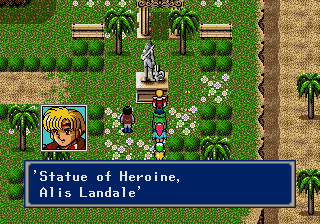
The translation is generally good by the standards of the time, other than a few awkward or mistranslated lines. Raja’s humor, in particular, is more absurd than corny in the localization, as his jokes tend to make absolutely no sense.
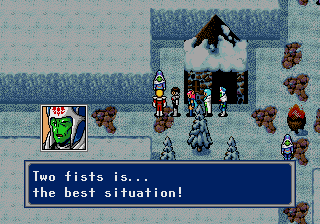
Right.
As before, though, there are consistency issues with the rest of the series; it uses the name Lutz instead of Noah, and re-uses the name Wren from PSIII for a different character, leading some players to believe that they must have been the same android, though there are several story details that contradict this. The resemblance between the names “Alys” and “Alis” also led to some rumors, though that, again, is a result of localization changes; in Japan, they were named Lyra and Alisa, respectively.
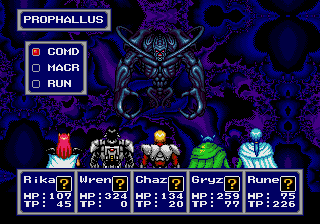
The rarest enemy in the game is a smaller version of PS1’s Dark Force, which gives a ton of Exp.
Director Rieko Kodama and scriptwriter Akinori Nishiyama would work together again shortly thereafter as the main creative brains behind the excellent Saturn action RPG Magic Knight Rayheart. One console generation later, Yuji Naka, who’d programmed the first two games, would work as a producer on the series’ vastly different second incarnation, Phantasy Star Online, with Nishiyama again serving as scriptwriter. Kodama, meanwhile, having also been promoted to producer, would supervise the widely acclaimed RPG Skies of Arcadia.
Most of the original series’ creators are now retired, or have since been promoted to business positions and out of game design.
